Zenon Palacz
What are the parameters required for high precision measurements of small samples? (on Faraday collectors)
- High Sensitivity
- Instrument sensitivity
- Use of activators
- Low noise
- Close to theoretical Johnson noise
- Baseline stability
- Gain stability between detectors
- Required for static analyses
- Multidynamic measurements:
- Eliminates gain and efficiencies
- But can it be used on small samples?
How quiet are Xact amplifier/resistor boards?
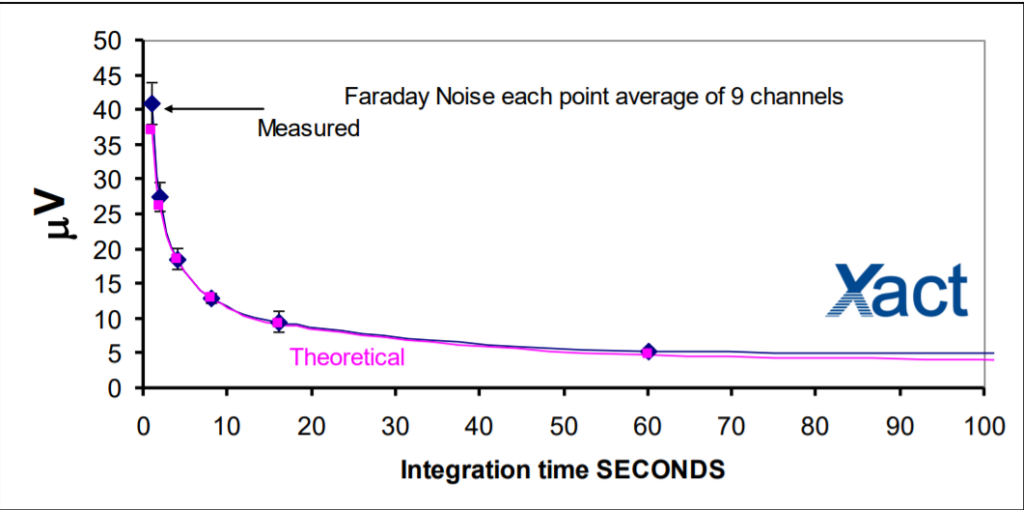
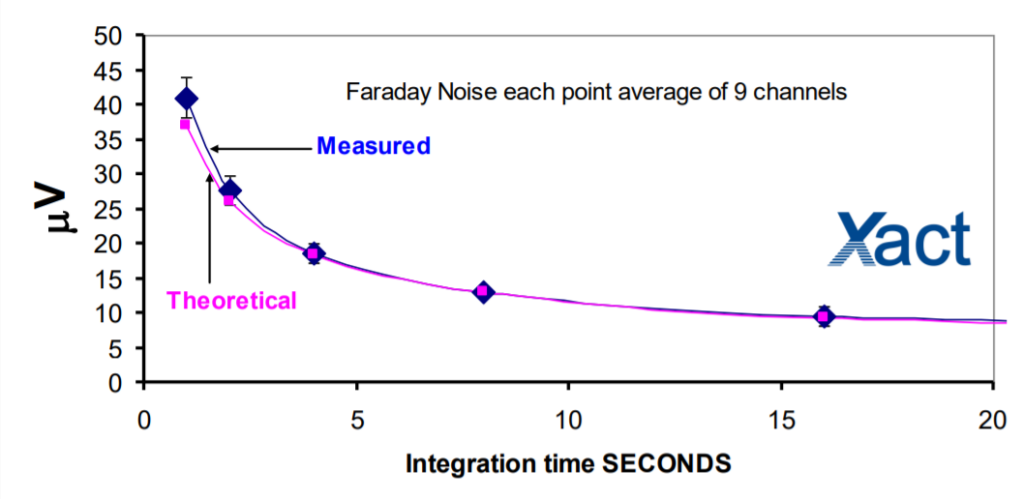
Noise comparison between 1e11 and 1T resistors
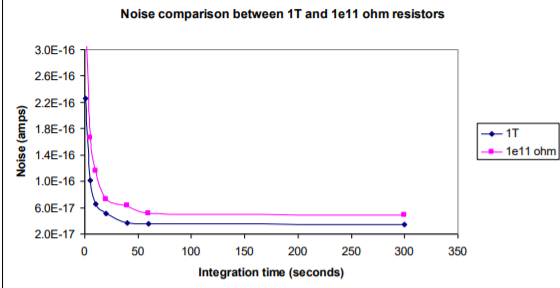
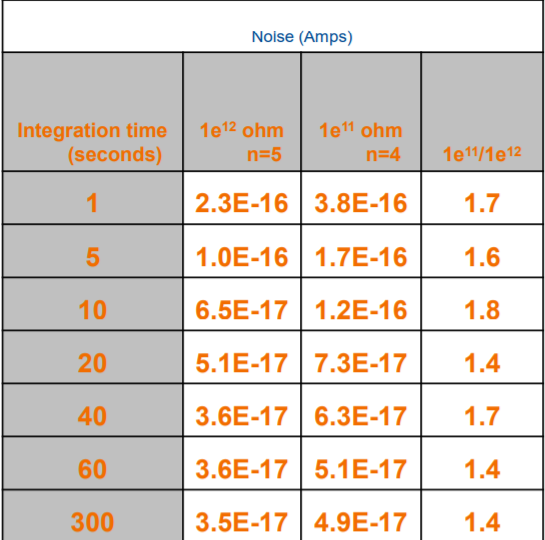
How fast are Xact resistors (1e11 ohm)?
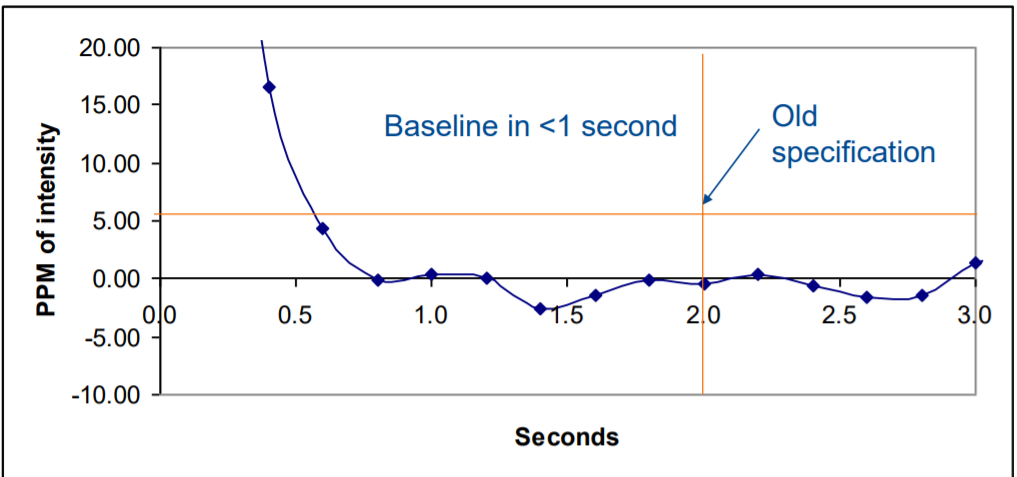
1T baseline in 4 seconds
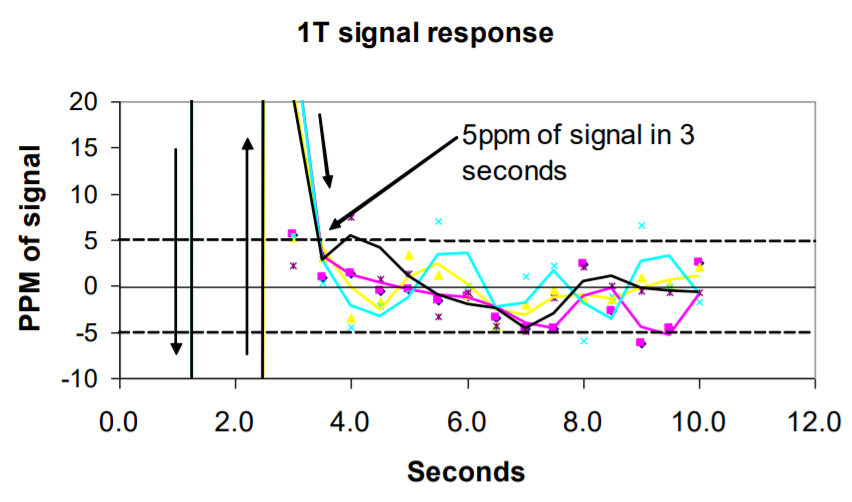
Gain stability 5ppm over 1 month no drift

Day averages
Reduced scatter shows subtle coherent trends. Measured on factory floor with no environmental temperature control.
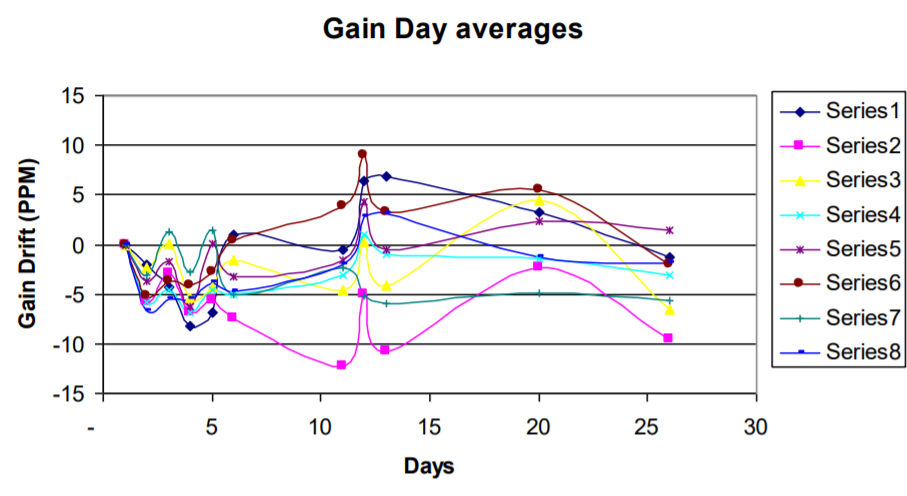
Sr dynamic precision 3ppm reproducibility (5volt ion beam)
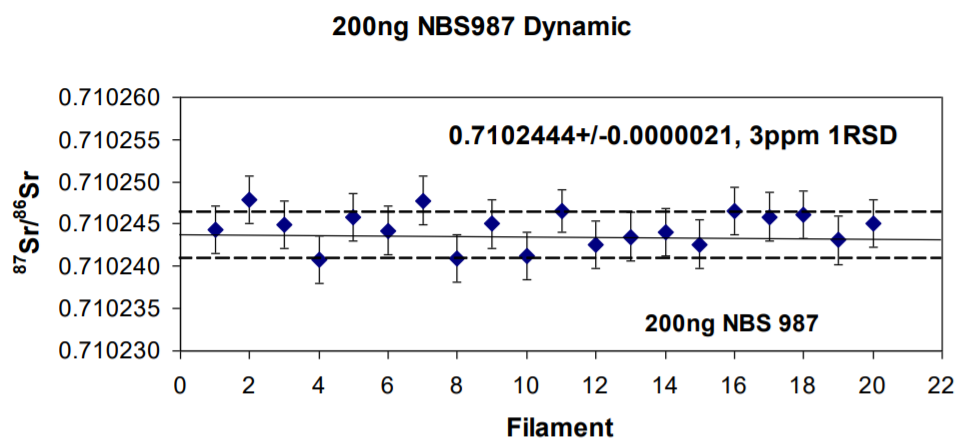
Static precision 5ppm no gain corrections between analyses (5 volt ion beam)
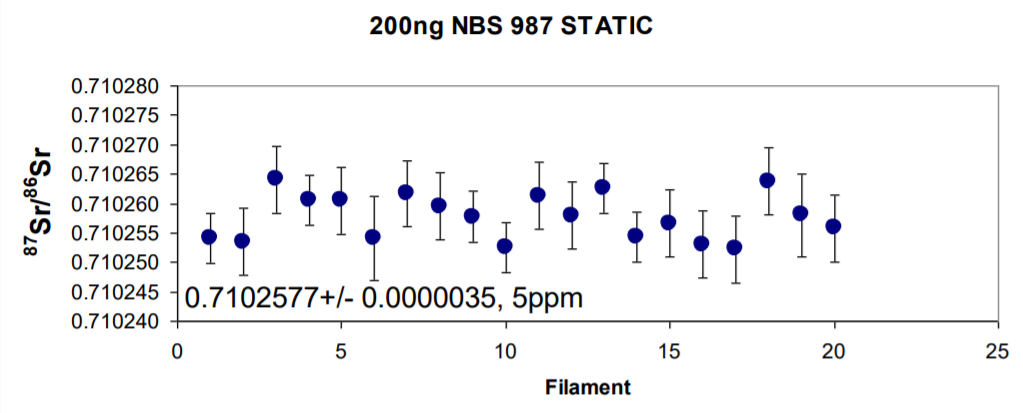
How small a sample of Nd can be measured on Faradays
- Nd+ ion atom efficiency is about 2.5% (triple filament)
- NdO+ is higher than this.
How small an ion beam can we measure with good precision and accuracy?
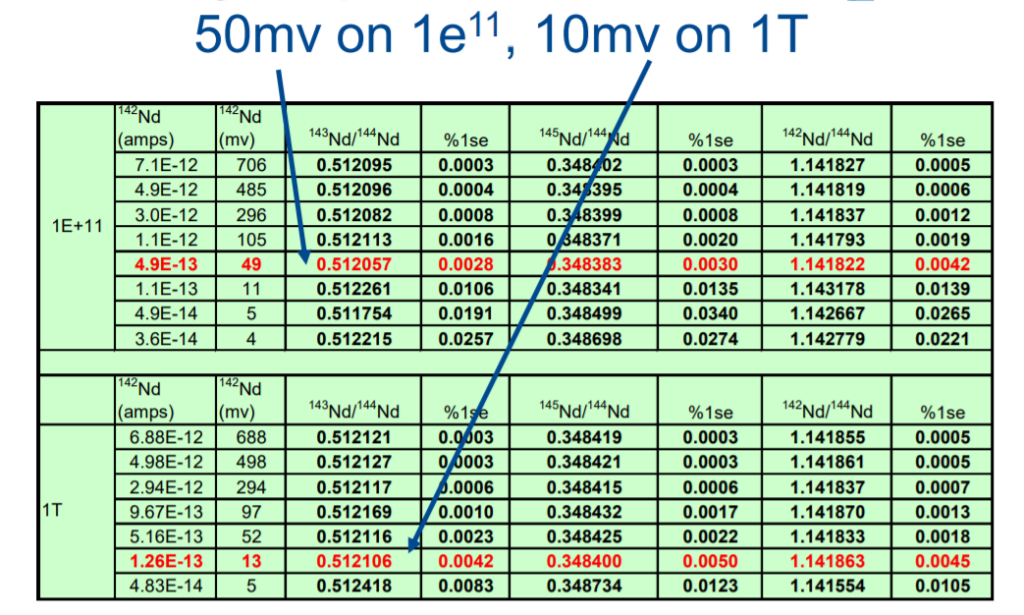
Errors expand below 1e-13A
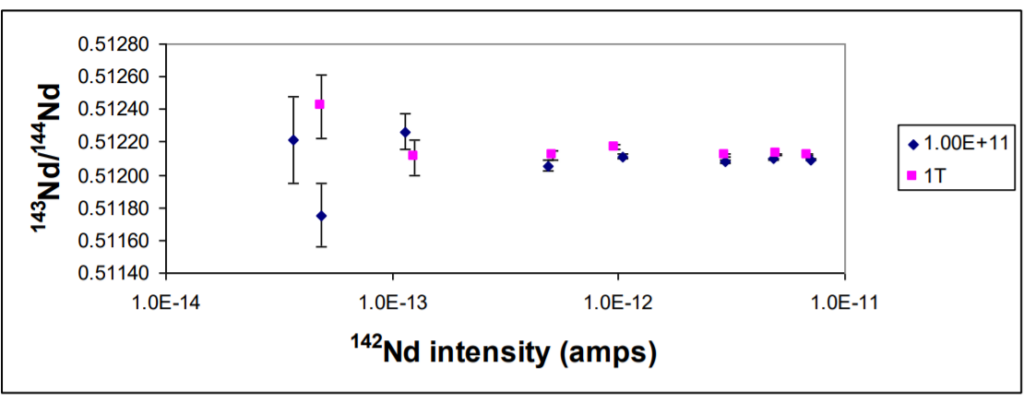
10.5% ion/atom efficiency
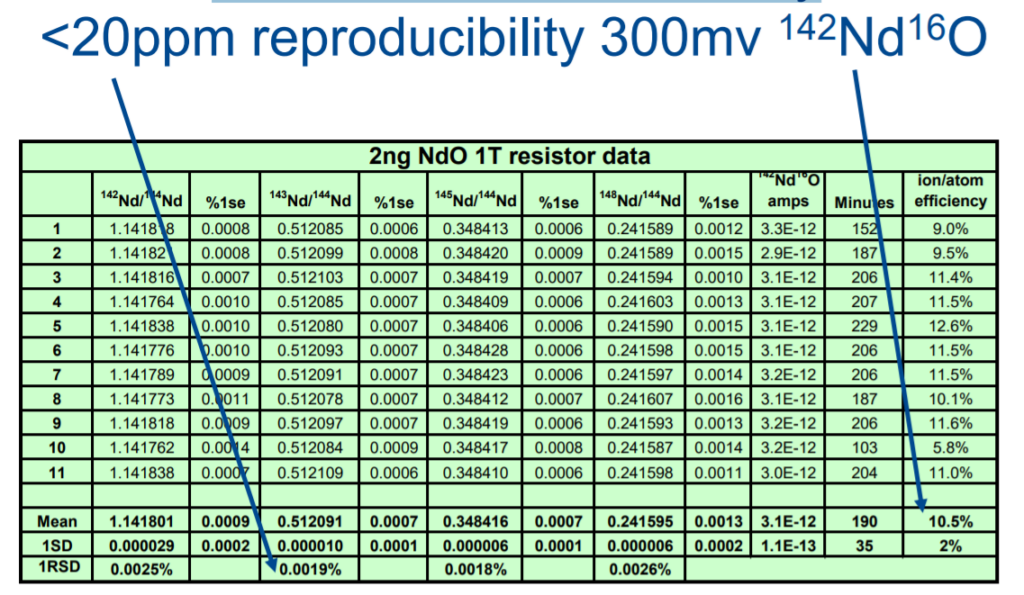
2ng Nd measured as oxide at 300mv 142Nd16O
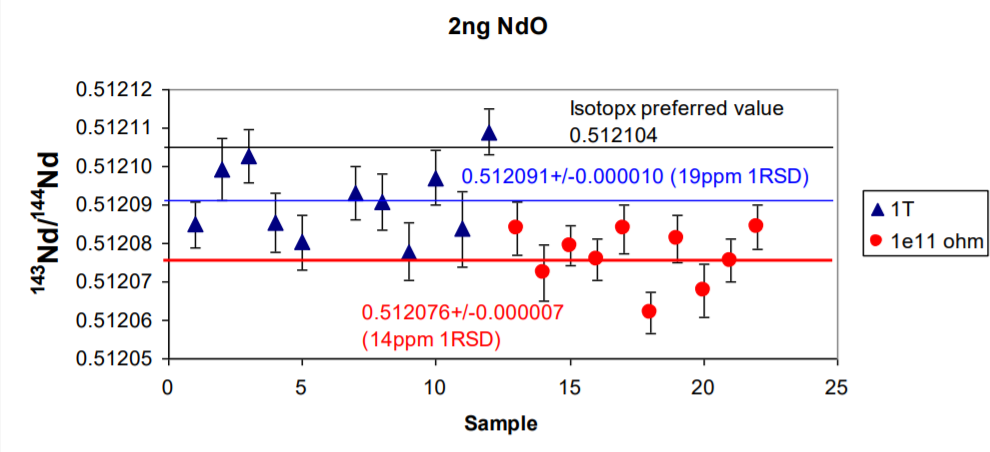
Total evaporation measurements
- Widely used in nuclear applications to overcome mass fractionation by taking the average isotopic composition of the whole evaporation process.
- Baselines , peak centring and focussing at the start of the measurement prior to filament current ramping
- All above must remain stable during the evaporation.
- Used for small Sr in this application
- Potential benefit for micro-drilled samples, ice cores?
Total evaporation (summed isotope ratios)
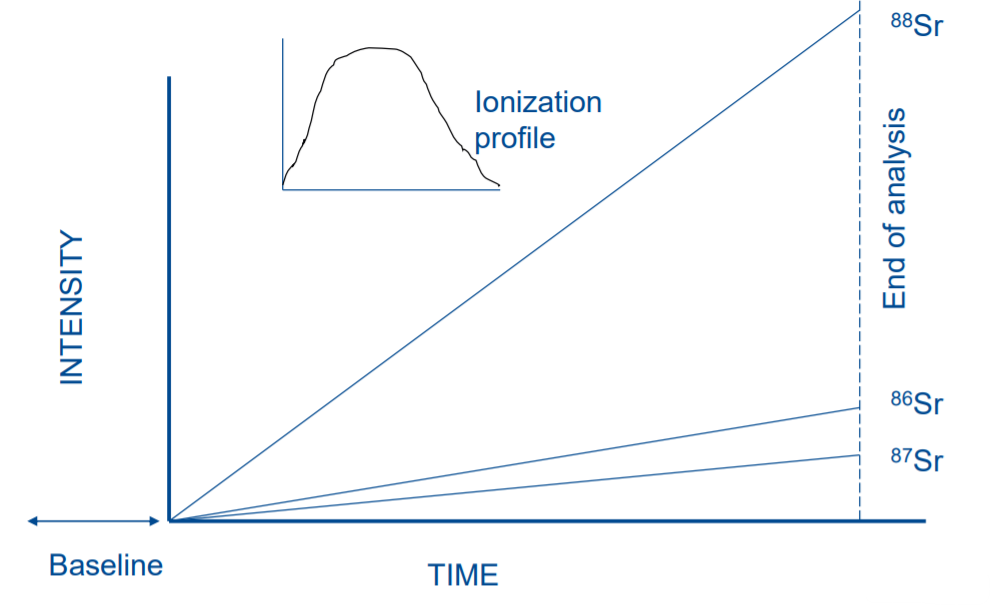
Baselines must remain constant throughout analysis
50ng Sr ion beam profile 7v for nearly 2 hours Efficiency 3.5% (No focussing or peak centring)
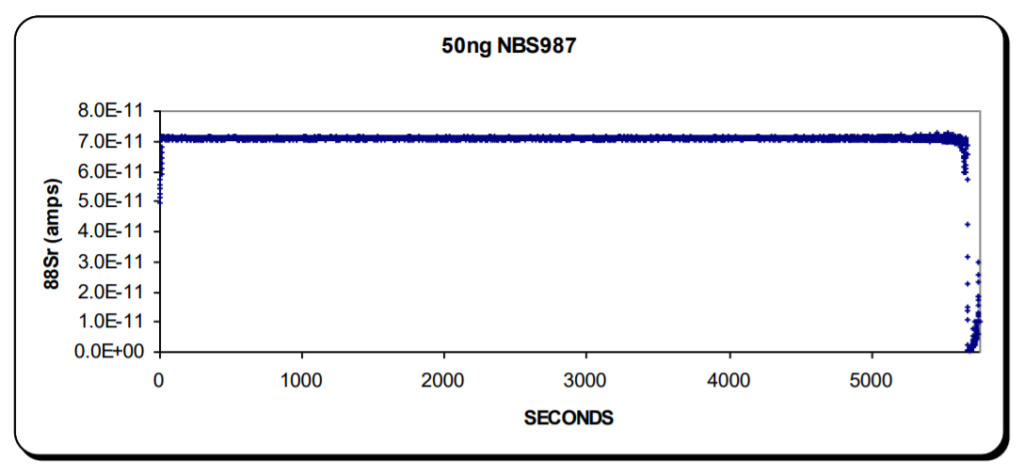
86Sr/88Sr (summed) 50ng NBS 987
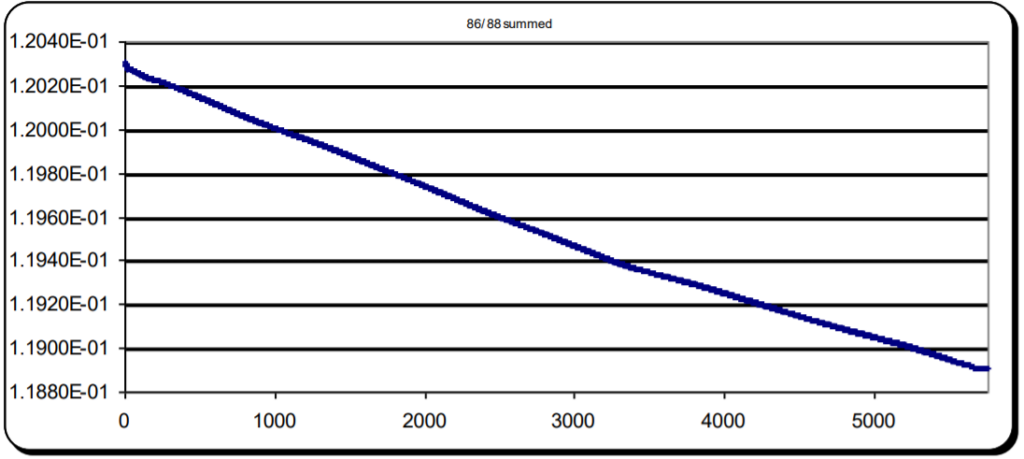
87Sr/86Sr (summed)
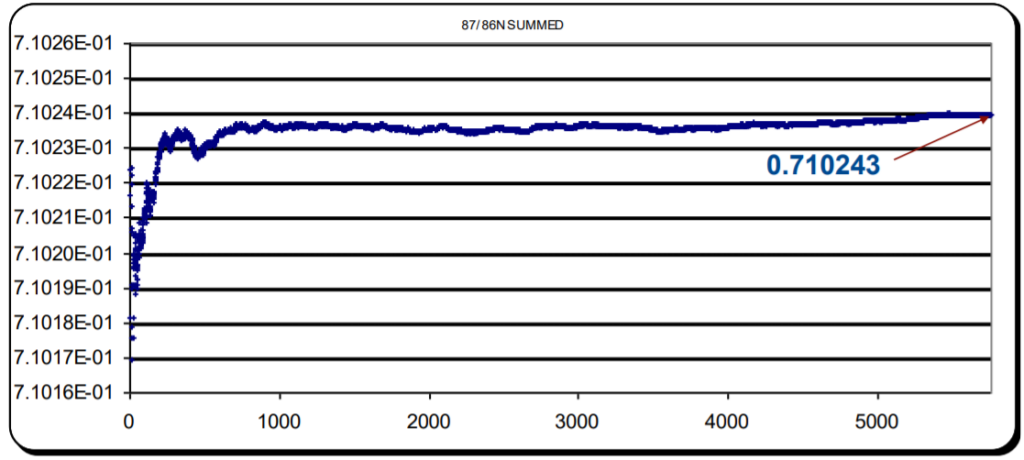
1ng Sr 3volts 88Sr for 150 minutes Efficiency= 13%
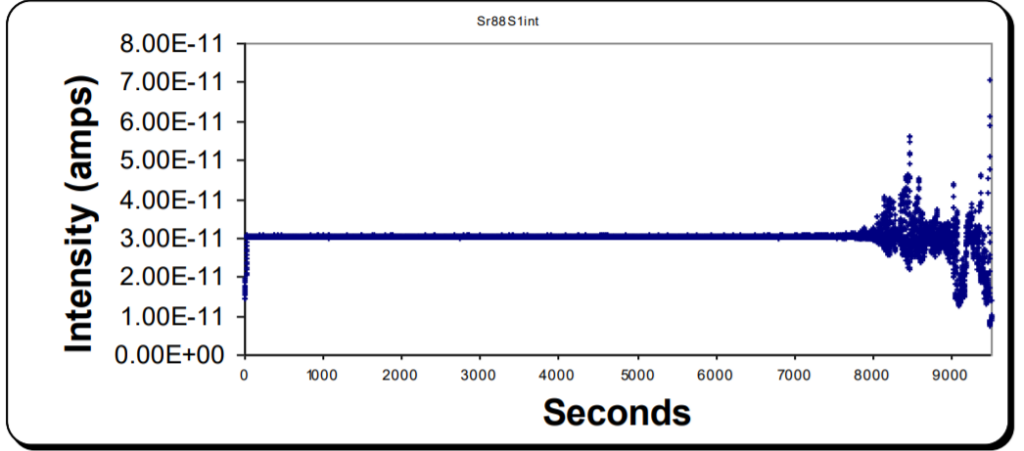
Total evaporation measurements of NBS 987 <1ng
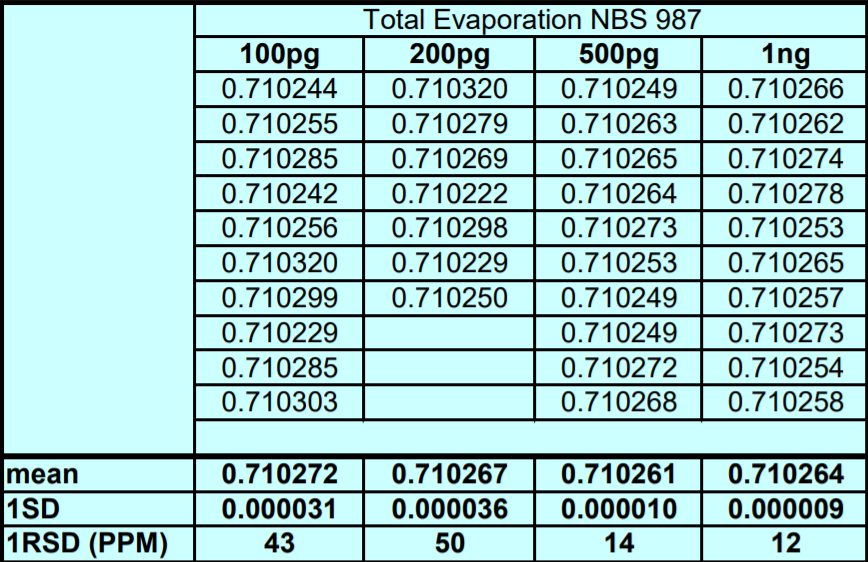
Ion/Atom detection efficiency for Sr with TaCl activator on rhenium filament
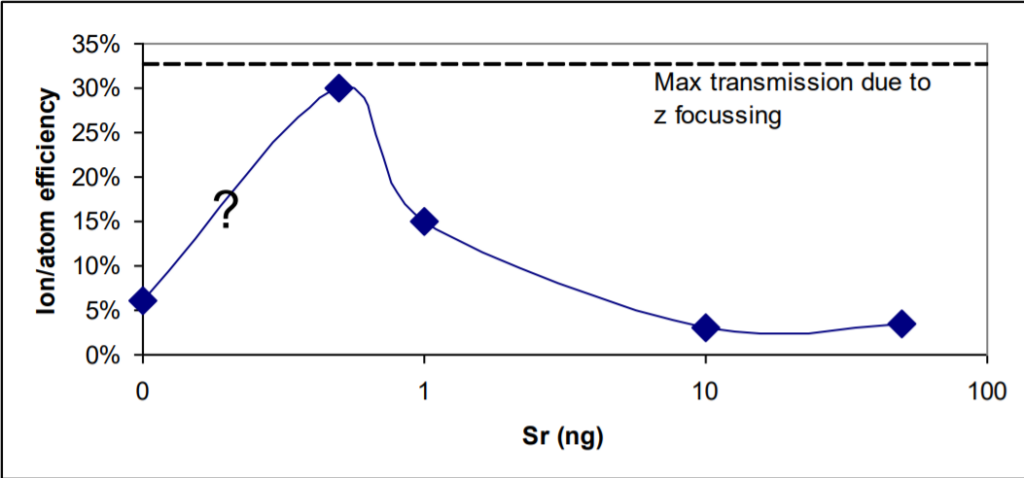
Conclusions
- Sub nanogram isotope ratio measurements of Sr can be easily made using total evaporation analyses.
- NdO measurements at the nanogram level produce 20ppm reproducible 143Nd/144Nd
- 1T resistors are 1.5 to 2 times less noisy than 1e11 depending on integration time.
- 1e11 ohm and 1T ohm resistors produce analytically similar data with ion beams >50mv.
- 1T resistors show analytical advantage below 10mv. No benefit to Sr and Nd, Probable benefit for small sample Os, Pb and U isotopes.
- Static Isotope ratio reproducibilities of 5ppm are now possible with new amplifier boards in a temperature controlled environment. (no need for dynamic amplifiers)
- Boards are upgradeable on Sector 54, IsoProbe-T and IsoProbe-P instruments
Download presentation
Download the complete Presentation: 34th IGC Presentation